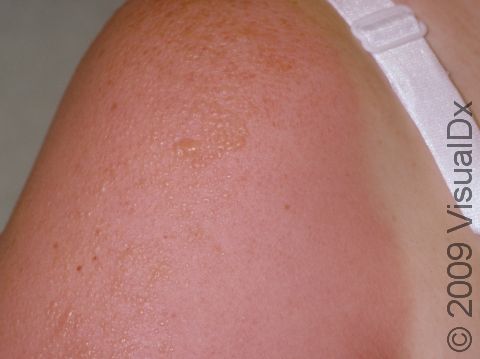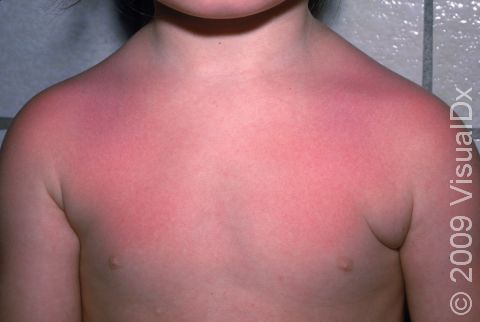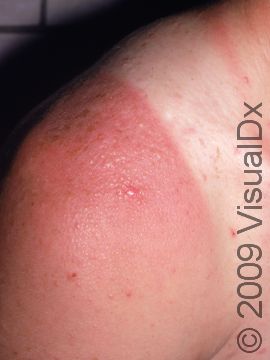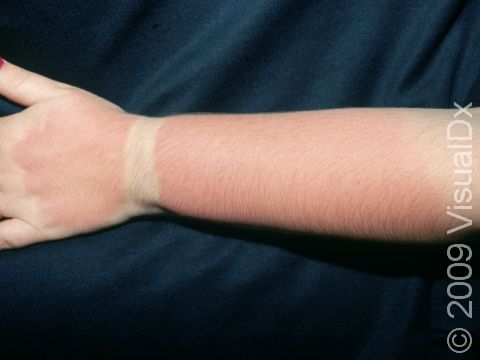Sunburn, First Aid
Sunburn is caused by the skin’s reaction to ultraviolet light exposure. It appears as reddening and tenderness of the skin and usually occurs between 12 and 24 hours after the exposure. It can develop blisters and shedding of the outer layer of skin. Some oral medications used for other medical conditions, most commonly hydrochlorothiazide (a blood pressure medication) may make the skin more sensitive to sunburning.
First Aid Guide
If you have suffered a sunburn:
- Further direct sun exposure should be avoided for a few days.
- Cool water or cool milk soaks may help cool and soothe the affected areas.
- Acetaminophen and ibuprofen can help decrease the redness and pain.
- Applying a greasy cream or ointment may actually make the pain worse by trapping the heat on the skin.
- Drink a lot of fluids.
Do not attempt to break any blisters that may form; you can cover these with gauze if necessary. If any break on their own, a topical antibiotic ointment can be applied. A moisturizer can help with skin peeling afterward. Avoid topical products that end in “-caine” as they can sometimes further irritate the skin.
Prevention is very important. To reduce risk of skin cancer later in life, sunburns should be prevented.
- Avoid direct sun in the middle of the day (10 AM to 3 PM). Remember: snow and water reflect light to the skin, and clouds still let a lot of light through, so you may still be exposed to ultraviolet light even on cloudy days.
- Use a hat with a wide brim. A baseball hat does not give much protection.
- Cover up with tightly woven clothing. Some manufacturers make specialty clothing with a high sun protection factor (SPF) rating, or you can purchase a special ingredient to be added to your washer that can “wash” SPF into your clothing.
- Use sunscreen on all exposed skin areas, including the lips, before going outdoors. A broad spectrum (blocks UVB and UVA light), with an SPF of at least 30, is best. Apply generously 30 minutes before going outdoors, and reapply every 2 hours or after swimming or sweating a lot.
- Do not use tanning beds!
Who's At Risk?
Sunburn occurs in people of all ages, particularly those with light skin.
Signs & Symptoms
Sunburn may occur on any sun-exposed area. Sunburn appears as redness within 4 hours following exposure followed by deep redness and blister formation in severe situations. Long-lasting redness may be present for weeks after the actual burn.
Treatments
- Cool compresses for severe sunburn.
- Cool milk soaks are an alternative.
- Acetaminophen and ibuprofen to help decrease the redness and relieve the discomfort.
- For severe reactions, prednisone, an oral steroid, may also help reduce the inflammation.
Visit Urgency
See your doctor if there is severe discomfort and inflammation.
Last modified on February 10th, 2023 at 7:08 pm

Not sure what to look for?
Try our new Rash and Skin Condition Finder




